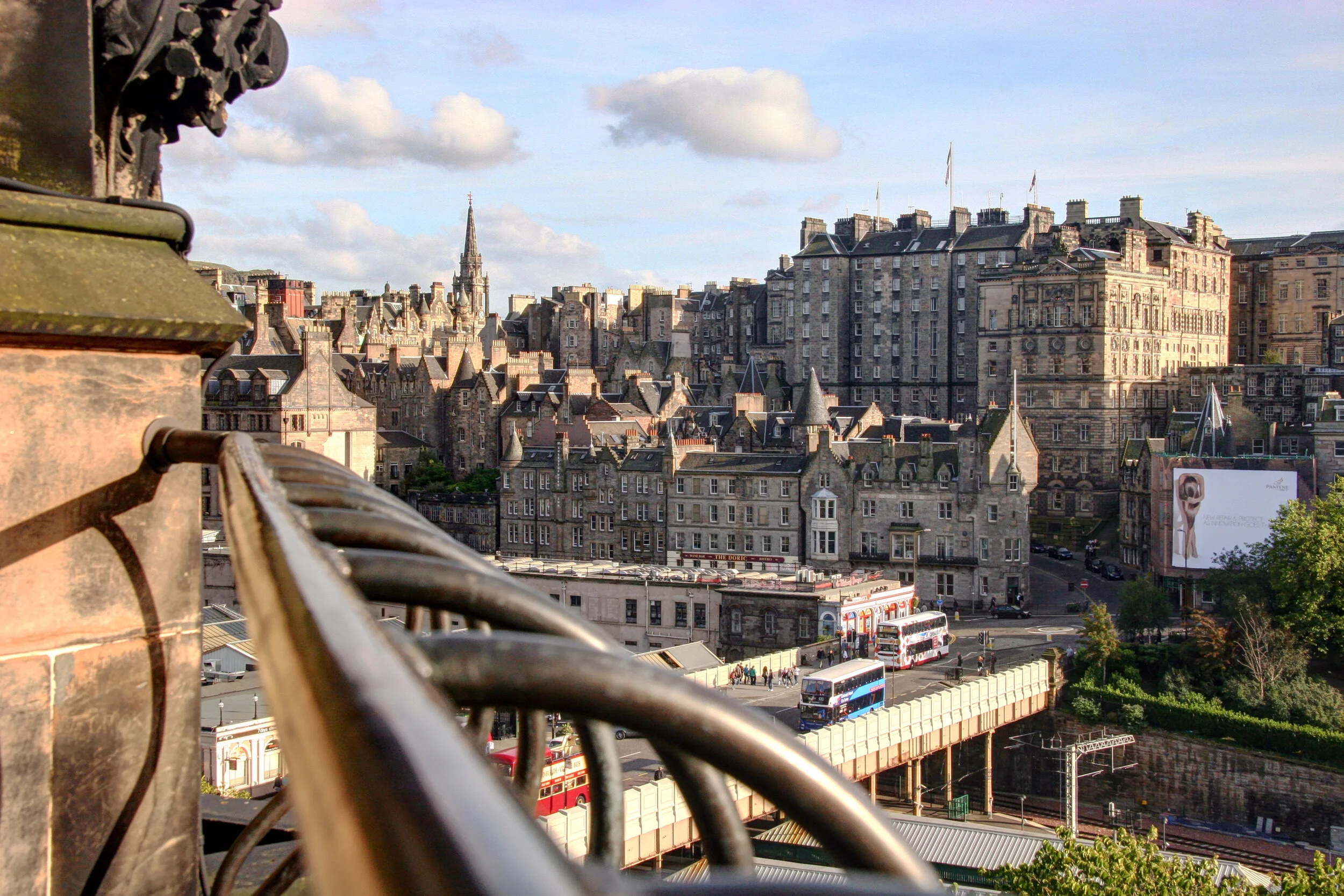
Page 3 of 5
Edinburgh, Scotland
I watch the patchwork farms slow fade into the ocean's arms
My very first visit to Scotland started in and (due to unfortunate time constraints) concentrated on Edinburgh and, more specifically, the Royal Mile. A series of streets that connect the (Royal) Castle with the (Royal) Palace at Holyrood that runs, well, about a mile long. Along the way you find yourself passing many stately stone buildings and churches, lots of quietly staring statues, the occasional street bagpiper player, more than one combination fish and chips/beef kebabs fast food restaurant, chances to go on haunted Edinburgh tours or see the 3D Loch Ness experience as well as store after store that sell kilts for hundreds and hundreds of pounds which, thankfully for all, I did not buy or, even more thankfully, did not wear.
On the Royal Mile, closer to the Castle and even closer to my unexpectedly nice hotel, stands St Giles Cathedral, the single greatest church in Scotland and probably the most famous Presbyterian church anywhere. What distinguishes the church from the outside is its distinct and rather impressive tower which is suspiciously shaped like a royal crown. And while the outside may be distinct and rather impressive, the inside of the church more than holds its own. Here a stone angel stares in perpetuity wondering (just like me) what the hell is up with that ceiling. Is it half finished or is it always supposed to look that way? I guess it's at least something for that stone angel to think about when all the tourists head home.
Whoa.
Enric Miralles won the design competition for the new Scottish Parliament Building in 1998 and the building opened in 2004. In between the project saw construction delays that pushed back the opening a few years, a project budget that ballooned from $70 Million (US) to near $700 Million (US) and, unfortunately, the death of its architect in 2000. Despite such a messy history, or more likely because of it, the building appears to be made of many especially strong elements that often overwhelm the composition and design as a whole. Everything from the repetitive, over thought custom furniture in the debating chamber to the office building's pop out window bays to the loose stick canopy out front to the unnecessarily patterned and heavy concrete vaults in the lobby are at times individually interesting and endearing, but taken together they are often just too much. But maybe, just maybe, that's the point of the design. Maybe a new parliament building for a newly formed parliament of an ancient country should reflect the messiness of a situation that, sooner or later, will almost definitely mean the end of the United Kingdom as we know it with full Scottish independence. Or, more likely, maybe all those cost and time over runs coupled with the death of its architect and a public agency for a client created the mess that such circumstances suggest. Still despite such a mess it really does have its moments, especially in person, when you think that maybe, just maybe, all is right with the design and maybe, just maybe, all is right with Scotland and the UK.
My visit to the building was somewhat limited due to parliamentary activities that day. And while I was unable to take photos or visit some normally visitable spaces, I was able to sit in on the parliament in the debating hall, a place full of seemingly earnest (and thick accented) politicians who spent (literally) most of their time arguing about Scottish whiskey. A one of a kind experience in a one of a kind building. And in the end, what more can you really ask for?
Eight hundred feet above Edinburgh, above the Royal Mile, above the castle, above the parliament, above Holyrood Palace and above everything else sits Arthur's Seat, a treeless volcanic outcropping that towers over parts of the city and that small part of Scotland. From the front door of the parliament building, a quick and rather steep trail passes by and through stone ruins, sweeping vistas and lots of locals as it heads up to the summit. And despite the significant wonders of all the castles and palaces and cathedrals and messy modern buildings, the trail and summit were (for me) far and away the best part of Edinburgh and, for my all too short visit, Scotland.
It's off to Glasgow (I had a Britrail Pass) to see Charles Rennie Mackintosh's landmark Glasgow School of Art, arguably more than just an Arts and Crafts landmark but also the first Modern building. A great building (where, as expected, interior photography was not allowed) that feels a bit run down in places, it remains in use as a school and a good one at that. And while there are plenty of pictures that might explain the exterior of the building better, I chose photos for the slideshow that are all about the design. A close up of the carefully thought out details at the fence, looking up from Renfrew Street at a building forever at the crossroads of Arts and Crafts and Modernism.

